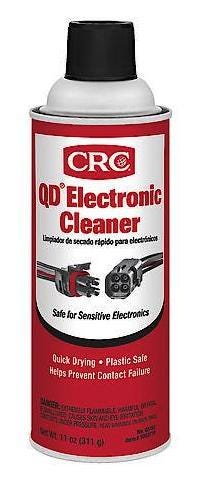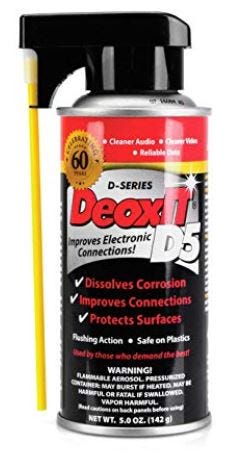Welcome to my J.A.M. (Just Ask Mike) Session, a weekly column where I answer your basic electrical questions. If you’re a newbie who’s never plugged in a shore power cord (or ask – what’s a shore power cord?), or wonder why your daughter’s hair dryer keeps tripping the circuit breaker, this column is for you. Send your questions to Mike Sokol at mike (at) noshockzone.org with the subject line – JAM.
Dear Mike,
I seem to remember you discussing how to clean contacts in connections, like my twist lock power cord and 7-pin trailer connector to my truck. But I can’t find it anywhere. Can you go over the basics, please? —Manfred
Dear Manfred,
Yes, I would be glad to. The first thing to know is that petroleum-based sprays such as WD-40 are bad news for most electrical contact cleaning. That’s because the oil (petroleum) base tends to attack the rubber and plastic connectors holding it all together. So if you keep spraying your connectors with WD-40, eventually the rubber or plastic will begin to swell up and deteriorate. So don’t do it! Also, petroleum jelly (Vaseline) is a bad idea for all the reasons above. But I’ve seen this sticky mess in the wild, so don’t use it on your electrical connections.
Cheap Tricks
There’s a cheap way and a higher-priced way to clean contacts correctly, so I’ll start with the cheap way first so you don’t get sticker shock. It’s really a two-stage process that’s pretty simple once you understand the basics.
First, you need to clean the brass contacts with something that will attack the oxide but not the rubber or plastic. The best inexpensive stuff I’ve found for this is CRC QD Electronic Cleaner, which you can find at any automotive parts store. Around $10 for a large can, this should last you quite a while, even if you clean your contacts once a month.
While this contact cleaner works great at getting rid of the oxide (corrosion) that can increase resistance and create overheating, it does strip off any protective coating that was there to prevent future oxidation as well as allow the contacts to slide against each other when your plugging or unplugging the connection. So now we move to Part 2.
Easy does it…
For this we need a lubricant that won’t attack the rubber or plastic (so it can’t be petroleum based), lets the parts slide together easily, and has the ability to create a protective film on the brass to slow down future oxidation. And that answer is CRC Heavy Duty Silicone Spray. Yup, the same stuff you should be using on your rubber door and slide seals works perfectly for your shore power and tow vehicle connectors as well. You can get a big spray can of it at the same automotive store for $8 or so. After you’ve used the contact cleaner in Step 1 to clean the connections and allowed a few minutes for them to air dry, just do a little spritz of the silicone spray in and on the contacts and mating surfaces.
Gold Standard
Finally, if you want a single-step process that does all of the above with the highest degree of cleaning, lubrication and protection, simply get a spray can of DeoxIT D5 and give a nice squirt in and on each electrical contact. While this is pretty expensive at $15 per 5 oz. spray can, that should last you a few years under normal usage. I use DeoxIT a lot because it seems to make oxide/corrosion melt away, and it automatically leaves a protective film behind that makes for smoother plugging and unplugging of your connectors. It’s what we use exclusively on all sorts of electrical connections in my pro-audio rigs, where we just can’t afford failure for any reason.
Hope this helps. And see you at my next Virtual Rally or maybe even a live rally sometime in the near future. At least I hope so.
OK, everyone. Remember that electricity is a useful and powerful force, so we all need to pay attention to safety precautions while using it.








